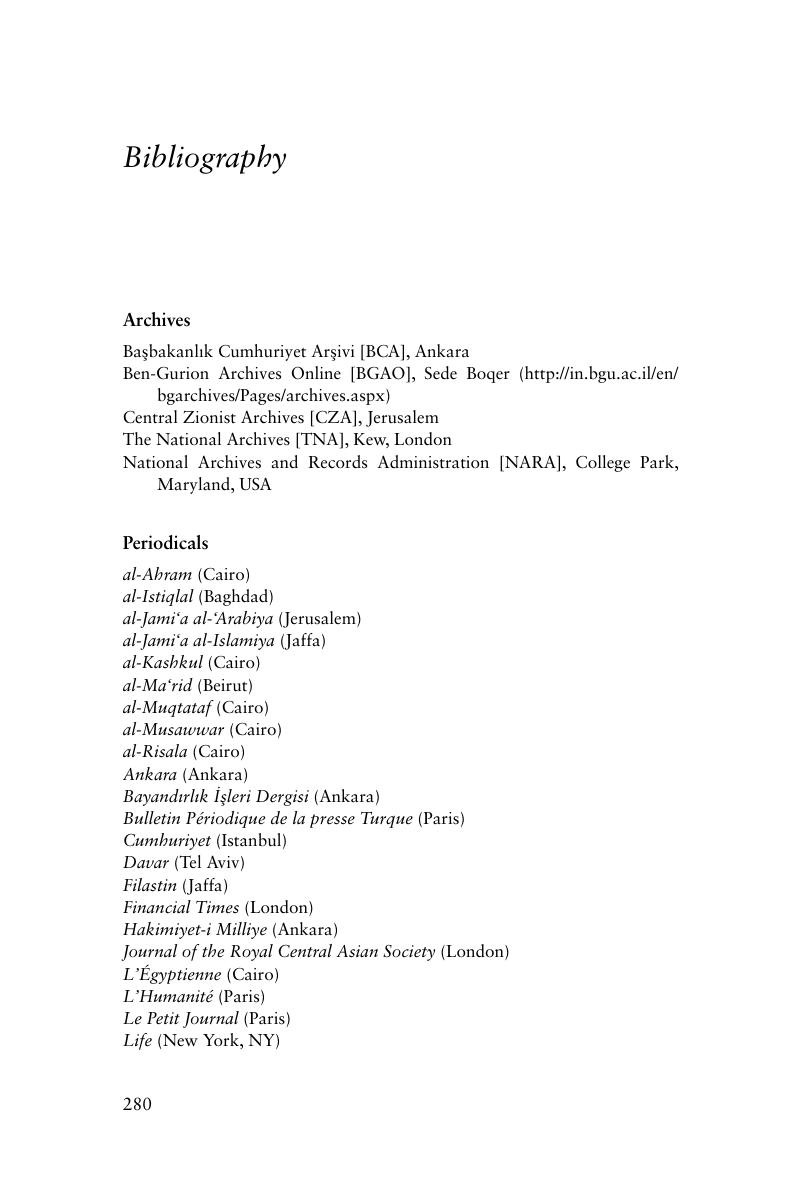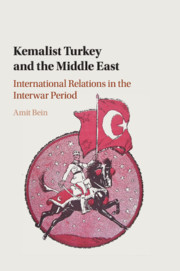Book contents
- Kemalist Turkey and the Middle East
- Kemalist Turkey and the Middle East
- Copyright page
- Dedication
- Contents
- Figures
- Maps
- Acknowledgments
- 1 Not-So-Distant Neighbor
- 2 Degrees of Separation
- 3 Ties That Bind
- 4 Great Expectations
- 5 The Turkish Model
- 6 Strolling Through Istanbul
- 7 A Distant Neighbor
- Notes
- Bibliography
- Index
- References
Bibliography
Published online by Cambridge University Press: 31 October 2017
- Kemalist Turkey and the Middle East
- Kemalist Turkey and the Middle East
- Copyright page
- Dedication
- Contents
- Figures
- Maps
- Acknowledgments
- 1 Not-So-Distant Neighbor
- 2 Degrees of Separation
- 3 Ties That Bind
- 4 Great Expectations
- 5 The Turkish Model
- 6 Strolling Through Istanbul
- 7 A Distant Neighbor
- Notes
- Bibliography
- Index
- References
Summary

- Type
- Chapter
- Information
- Kemalist Turkey and the Middle EastInternational Relations in the Interwar Period, pp. 280 - 290Publisher: Cambridge University PressPrint publication year: 2017

